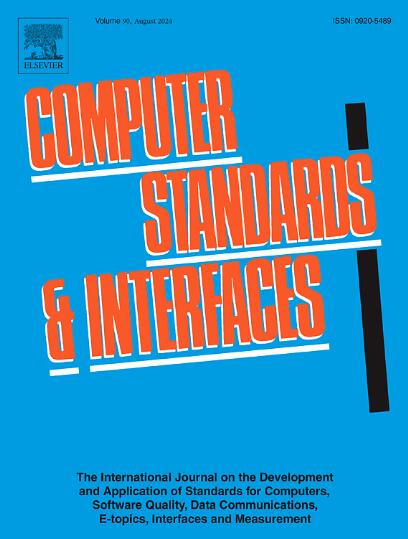使用DCGAN生成的合成MR图像,基于深度学习的脑肿瘤自动分割
IF 3.1
2区 计算机科学
Q1 COMPUTER SCIENCE, HARDWARE & ARCHITECTURE
引用次数: 0
摘要
脑肿瘤的早期发现大大增加了及时开始治疗的可能性。由于肉眼很难检测到肿瘤组织,因此发展了磁共振成像方法。MR图像的分析很大程度上依赖于放射科医生的经验和视觉解释。造成这种情况的主要原因是脑肿瘤的形式和大小各不相同。基于深度学习(DL)技术的自学习能力加速了医学图像分割研究。当训练数据量较大时,这些方法可以获得较高的成功率。ImageNet、CIFAR10/100、PASCAL VOC、MS COCO、BRaTS等基准数据集被广泛用于脑肿瘤分割。然而,这些数据集中有限的数据量限制了深度学习模型的性能。近年来,生成对抗网络(GAN)在医学图像生成领域的突出表现引起了学术界的关注。在这项研究中,我们提出了一个使用深度卷积GAN (DCGAN)创建合成脑磁共振图像的深度学习模型。使用BRaTS2018数据集的FLAIR序列训练数据作为输入。经过一定次数的epoch后,学习模型生成了逼真的高质量脑MR图像。FID评分用于评估GAN模型的性能。利用K-means算法对生成的MR图像上的肿瘤区域进行自动分割,生成782张图像的高维数据集。研究考察了合成MR图像在多大程度上增强了UNet、ResUNet、ResNet50、VGG16和VGG19模型的肿瘤区域分割性能。根据研究结果,ResNet50模型优于其他DL模型。在模型性能方面,准确率从98.99%提高到99.26%,骰子系数得分从57.33%提高到81.32%,IoU从40.89%提高到66.86%。本文章由计算机程序翻译,如有差异,请以英文原文为准。
Deep learning-based automated segmentation of brain tumors using synthetic MR images generated with DCGAN
Early detection of a brain tumor significantly increases the likelihood that treatment will begin in a timely manner. Because it is difficult to detect tumor tissue with visual inspection, the magnetic resonance (MR) imaging method was developed. The analysis of MR images largely dependent on the radiologist's experience and visual interpretation. The primary reason for this is that brain tumors can vary in form and size. Deep learning (DL)-based techniques have accelerated medical image segmentation research thanks to their self-learning capabilities. When large amounts of training data are presented, these methods can achieve high success rates. ImageNet, CIFAR10/100, PASCAL VOC, MS COCO, and BRaTS benchmark datasets are extensively used for brain tumor segmentation. However, the limited amount of data in these datasets restricts the performance of DL models. The outstanding performance of Generative Adversarial Networks (GAN) in the field of medical image generation has attracted the interest of academics in recent years. In the study, we present a deep learning model that creates synthetic brain MR images using a Deep Convolutional GAN (DCGAN). The BRaTS2018 dataset's FLAIR sequence training data has been utilized as input. After a certain number of epochs, the learning model generated realistic and high-quality brain MR images. The FID score was used to evaluate the performance of the GAN model. Tumor regions on the generated MR images have been segmented automatically using the K-means algorithm and produced a high-dimensional dataset of 782 images. The study examined to what extent synthetic MR images enhanced the tumor region segmentation performance of the UNet, ResUNet, ResNet50, VGG16, and VGG19 models. According to the findings of the study, the ResNet50 model outperformed the other DL models. In terms of model performance, accuracy improved from 98.99% to 99.26%, the dice coefficient score moved from 57.33% to 81.32%, and the IoU increased from 40.89% to 66.86%.
求助全文
通过发布文献求助,成功后即可免费获取论文全文。
去求助
来源期刊

Computer Standards & Interfaces
工程技术-计算机:软件工程
CiteScore
11.90
自引率
16.00%
发文量
67
审稿时长
6 months
期刊介绍:
The quality of software, well-defined interfaces (hardware and software), the process of digitalisation, and accepted standards in these fields are essential for building and exploiting complex computing, communication, multimedia and measuring systems. Standards can simplify the design and construction of individual hardware and software components and help to ensure satisfactory interworking.
Computer Standards & Interfaces is an international journal dealing specifically with these topics.
The journal
• Provides information about activities and progress on the definition of computer standards, software quality, interfaces and methods, at national, European and international levels
• Publishes critical comments on standards and standards activities
• Disseminates user''s experiences and case studies in the application and exploitation of established or emerging standards, interfaces and methods
• Offers a forum for discussion on actual projects, standards, interfaces and methods by recognised experts
• Stimulates relevant research by providing a specialised refereed medium.
 求助内容:
求助内容: 应助结果提醒方式:
应助结果提醒方式:


